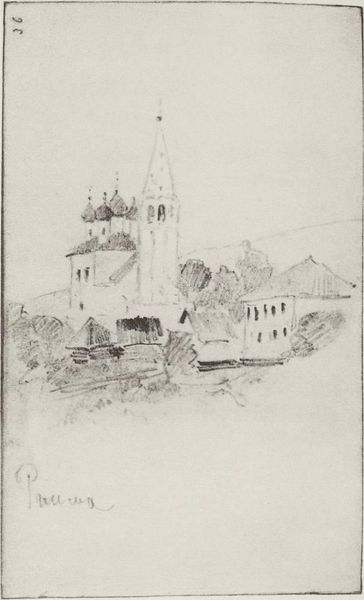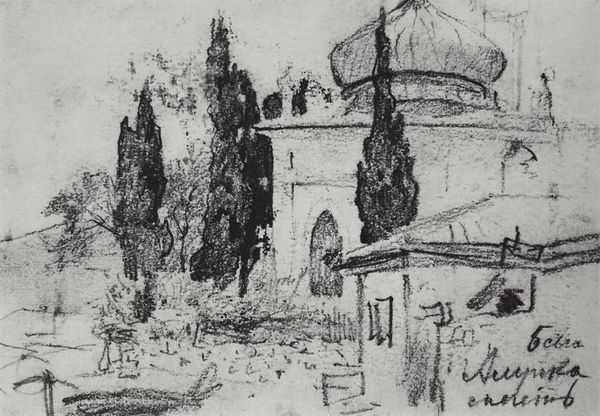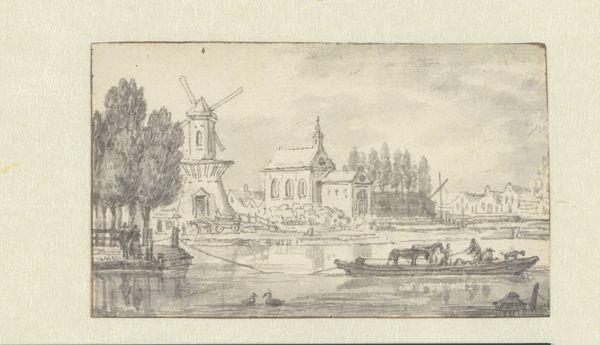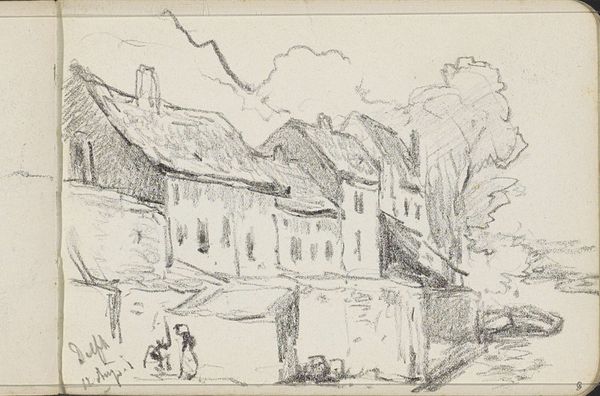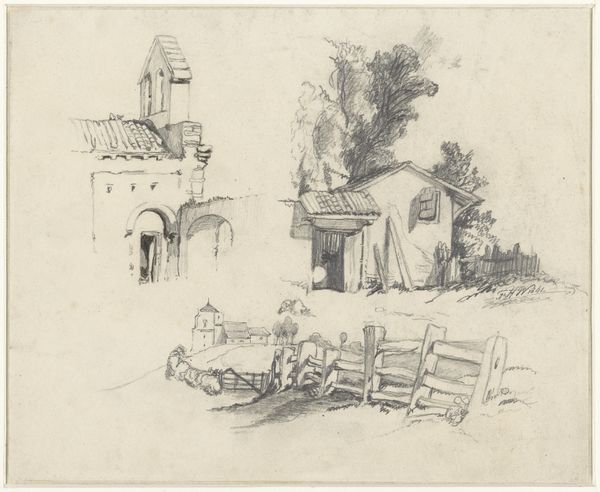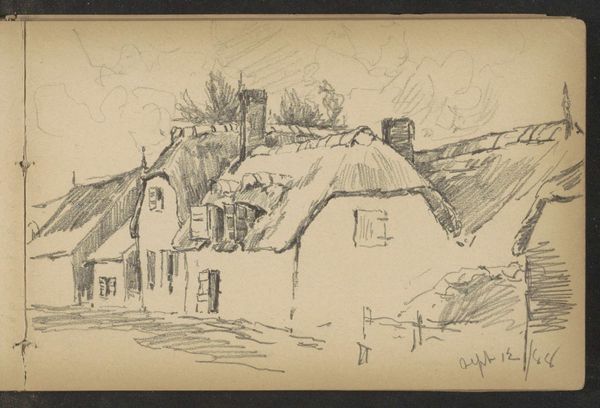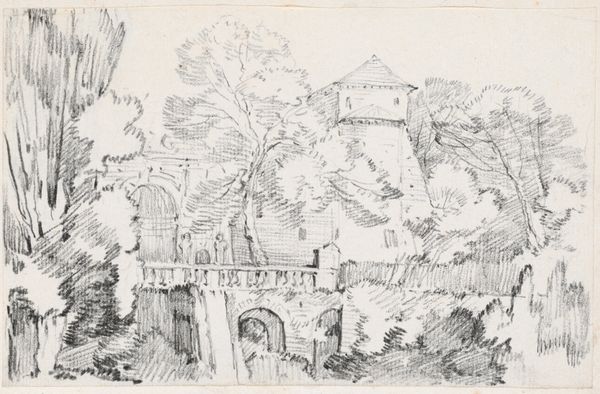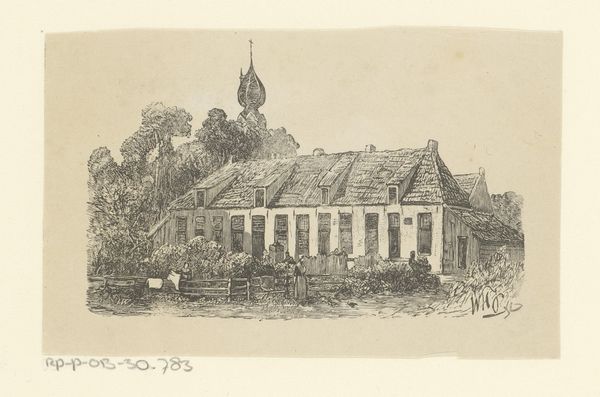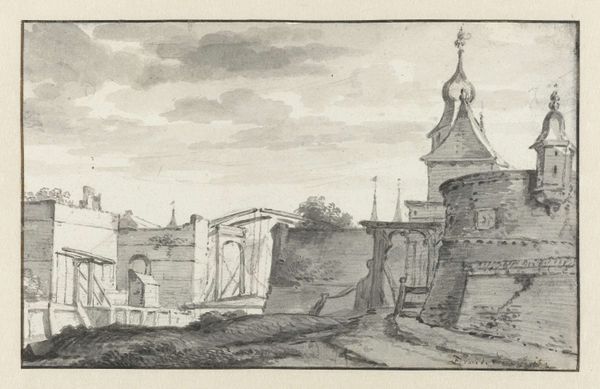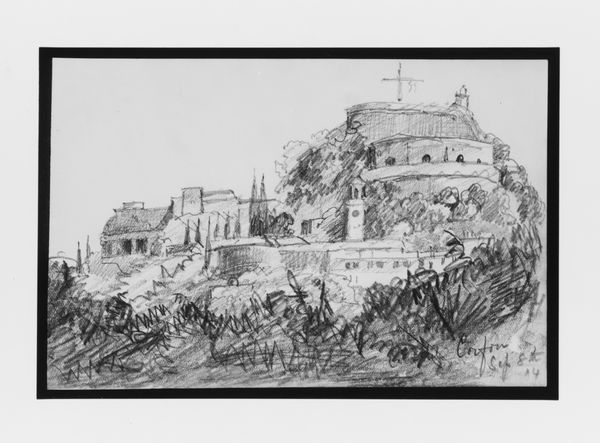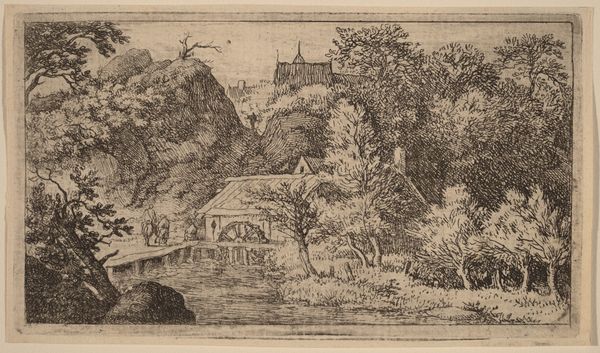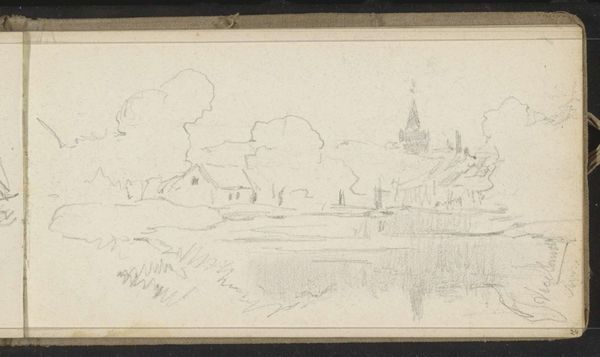
drawing, pencil
#
drawing
#
landscape
#
pencil
#
russian-avant-garde
#
realism
Dimensions: 31.5 x 48.3 cm
Copyright: Pyotr Konchalovsky,Fair Use
Curator: At first glance, there's a somber atmosphere. A sketch of some solemn, distant space, a cathedral looming behind a rough field… a very austere depiction of Russian landscape. Editor: Pyotr Konchalovsky created this pencil drawing, titled "Novgorod the Great. At the fence of the cathedral," in 1925. It fits into the broader context of Russian avant-garde art. What draws me is the starkness in his choice to portray a landscape so entrenched in spiritual and cultural history. Curator: Indeed, Novgorod carries a heavy symbolic weight, especially its cathedrals—centers of religious life and Russian identity. But I wonder why he focuses so keenly on the "fence." What purpose does that separation serve? What could this choice suggest about the period of Russian art around that time? Editor: Perhaps the fence represents a metaphorical barrier. The avant-garde, after all, was often about questioning traditional boundaries— artistic, social, even spiritual. It suggests the revolution, perhaps, or just a changed vision and place for cultural symbols. Curator: The choice of pencil itself, though, I think speaks to the intimacy and immediacy. It feels almost like a private observation, a sketch done quickly to capture an emotional state, rather than a formal portrait of national pride. We see through his immediate response how the artist grapples with how much Russian visual tropes and symbols have been changed by socio-political shifts. Editor: True. But the loose, almost frantic, pencil strokes—especially around the cathedral's domes—evoke a certain agitation, a questioning of what endures, perhaps even an underlying anxiety despite the overt Realist subject matter and aesthetic. Curator: Yet, consider the small figures. Almost like afterthoughts—diminutive, powerless even—but the image becomes more immediate thanks to their mundane inclusion. Everyday people move about in the landscape, near Russia's religious icons and its visual culture more generally. Perhaps their continued presence ensures continuity of culture memory, despite the radical societal and spiritual upheaval? Editor: It becomes a layered observation, doesn't it? Not simply a landscape, but a meditation on national identity and historical change visualized through interactions with its cultural icons and figures. Konchalovsky reveals the complex and multifaceted role of symbols as psychological vessels through it all. Curator: In that sense, it bridges the gap between art and its political backdrop. His aesthetic lens creates a sense of public role. Thank you. Editor: Absolutely. A compelling snapshot in time.
Comments
No comments
Be the first to comment and join the conversation on the ultimate creative platform.
